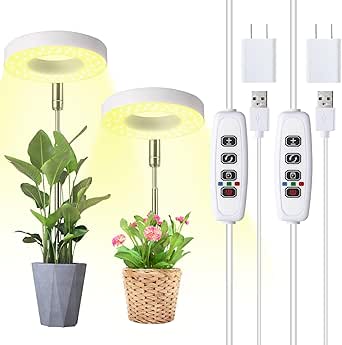Halo Ring Grow Lights have gained popularity among indoor plant enthusiasts due to their unique design and claimed benefits for small plants. However, before investing in these lights, it’s essential to weigh the pros and cons to determine if they are a worthwhile addition to your plant care routine.

Pros of Halo Ring Grow Lights
Compact and Aesthetically Pleasing Design
Halo Ring Grow Lights are designed to be compact and visually appealing, making them suitable for small spaces and adding a decorative touch to your indoor plant setup.
Adjustable Height and Rotation
The lights come with height-adjustable tubes that can be rotated 180 degrees, allowing you to customize the light intensity and direction for each plant’s needs.
Convenient Timer Function
Halo Ring Grow Lights feature a cycle memory timer function that automatically turns the lights on and off at the same time each day, making it easy to maintain a consistent light schedule for your plants.
Full Spectrum and Dimmable Levels
These grow lights offer a full spectrum of warm, white, and blue light, which can promote various stages of plant growth, from germination to flowering and fruiting. The 10 dimmable levels allow you to fine-tune the light intensity to suit your plants’ needs.
Versatile Usage
Halo Ring Grow Lights can be used with a variety of plants, including flowers, vegetables, fruits, and succulents, making them a versatile choice for indoor gardeners.
Cons of Halo Ring Grow Lights
Limited Coverage Area
While the compact design is convenient for small spaces, it also means that the lights may not provide sufficient coverage for larger plants or multiple plants in a single pot.
Potential Heat Issues
Some users have reported that the lights can generate heat, which may be a concern for plants that prefer cooler environments or are sensitive to heat stress.
Durability Concerns
The long-term durability of Halo Ring Grow Lights is uncertain, as they are a relatively new product on the market. Some users may prefer to invest in more established grow light brands with proven track records.
Potential for Uneven Light Distribution
The circular design of the lights may result in uneven light distribution, with plants closer to the center receiving more light than those on the edges.
Reliance on USB Power
The lights require a USB power source, which may limit their placement options or require the use of extension cords or power banks.